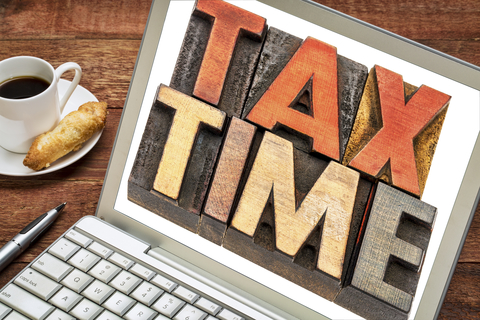 The vast majority of small business owners—most of whom report their share of business income on their personal returns—use paid preparers to complete and file their tax returns. But this doesn’t mean owners have no work to do for their taxes. The purpose of my book, J.K. Lasser’s Small Business Taxes 2017 is to make small business owners aware of how to make tax-sensitive business decisions throughout the year so they can achieve optimum tax savings when they file their returns.
The vast majority of small business owners—most of whom report their share of business income on their personal returns—use paid preparers to complete and file their tax returns. But this doesn’t mean owners have no work to do for their taxes. The purpose of my book, J.K. Lasser’s Small Business Taxes 2017 is to make small business owners aware of how to make tax-sensitive business decisions throughout the year so they can achieve optimum tax savings when they file their returns.
Here are 5 last minute tax ideas for you to use now.
-
Watch the filing deadline.
This year you have until April 18, 2017, to file your personal return. For any reason (e.g., your CPA is too busy to meet with you now) if you can’t meet this deadline, ask for a filing extension. You can file for the extension; you don’t need to pay a professional for this action. Then you’ll have until October 16, 2017, to file your 2016 income tax return. But be sure to pay what you think you’ll owe in order to avoid late payment penalties. If you have foreign financial accounts, you may also need to file an FBAR report with the Treasury (not the IRS) by April 18.
-
Take last minute actions.
It’s not too late to do certain steps that will benefit your 2016 return, including:
- Contributing to a qualified retirement plan. If you set it up by December 31, 2016, you have until the extended due date of the return to put in your annual contribution. If you didn’t, you can still set up and fund a SEP; if you have employees you’ll have to contribute to their accounts as well.
- Contributing to a health savings account. If you had a high-deductible health plan in 2016, you can make deductible contributions for 2016 to an HSA by April 18.
- Contributing to an IRA or Roth IRA. Assuming eligibility (check income limits), you can also fund their retirement savings accounts. The deadline is also April 18, whether or not you obtain a filing extension.
- Making smart elections. The tax law provides a number of options on how to take write-offs for certain items. This is something to discuss with your preparer.
-
Simplify reporting with good recordkeeping.
Tracking all your expenses allows you to optimize your write-offs. Using an accounting solution, such as QuickBooks, easily organizes your expenses into the categories you set up (e.g., advertising, repairs, travel and entertainment expenses) and ensures that business items are separated from personal expenses. If you aren’t yet using an accounting solution, be sure to begin now so that next year’s return process will be easier.
-
Organize paperwork.
In addition to tracking your income and expenses through an accounting solution, you also need receipts, invoices, and other paperwork to back up claimed write-offs. Presenting your preparer with a box of paper slips will cost you in professional fees; organize your paperwork yourself. Again, a good year-round business practice of sorting or scanning and organizing your receipts will pay off at tax time. Consider using an option such as Shoeboxed, which does the organizing for you.
-
Address estimated taxes.
Self-employed individuals without access to withholding must pay federal income taxes through four estimated payments. S corporation shareholders may also need to make these payments if withholding on their salaries doesn’t cover the tax on their share of business profits. The first estimated tax payment for 2017 is due on April 18, 2017.
- Work with your tax pro to get the payment amount right. Overpaying results in an interest-free loan to the government while underpaying can result in interest and penalties.
- Include all required taxes. Estimated taxes cover not only income taxes, but also self-employment tax, additional Medicare taxes on earned income and net investment income, and the “nanny tax” for household employees.
- Create a tax payment account. Hopefully you can pay your estimated taxes with funds on hand. If you found yourself short of cash to make this estimated tax payment, review your business practices so you segregate money on a regular basis for this purpose.
Final thought
As a small business owner you can’t duck your tax responsibilities. Taking some simple measures can ease your burden and improve your bottom line.


